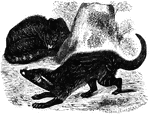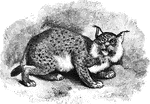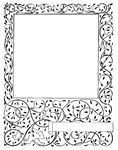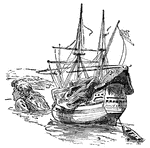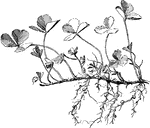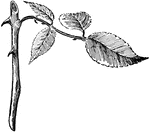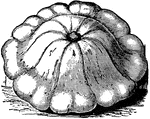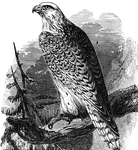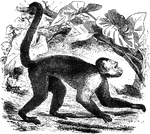
White-Throated Sai
"Genus Sajou. These creatures are somewhat smaller, but less slender that the ateles: the tail…
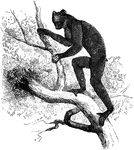
Indri
"Genus Indri: Indris. - This genus includes only a single species, the Short-Tailed Indri of Madagascar,…
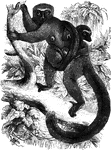
White-Fronted Lemurs
"Genus Maki: Lemur. The makis are the proper lemurs, and are distinguished by thick, soft fur,…
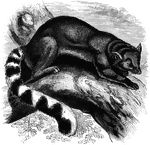
Ring-Tailed Bassaris
"It has a sharp, pointed nose, and a cunning expression, reminding one of a fox or raccoon. The body…
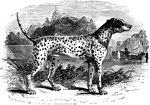
Dalmatian
"Its body is generally white, marked with numerous small round black, or reddish-brown spots. The dalmatian…
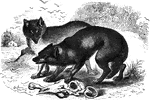
French Wolves
"The common wolf is of the size of a large dog; its usual color is a yelowish gray: the hair strong…
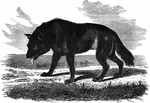
American Wolf
"The common wolf is of the size of a large dog; its usual color is a yelowish gray: the hair strong…
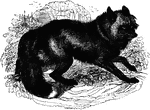
American Cross Fox
"The size is that of the common fox, the fur exceedingly long, soft, and rich; and, although presenting…

Battle at Willis Church
"Battle at Willis Church, Monday, June 30th, 1862- the Federal forces, under General Heintzelman, engaged…

Battle of Savages Station
"Battle of Savages Station. Brigadier General Smith's division hotly engaged with the enemy, at noon,…

Battle of White Oak Swamp Bridge
"Battle of White Oak Swamp Bridge, Monday June 30th, 1862- Ayres's, Mott's and Randall's batteries checking…

Peter White
Peter White will ne'er go right. Would you know the reason why? He follows his nose, wherever he goes,…

Sea Bass
"Sea bass has a white, flaky flesh, and weighs from 1 to 3 pounds. This fish responds to any cooking…
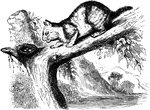
Canada Lynx
"The Canada Lynx of the Indians, has a round, broad head, large eyes, strong teeth, ears acute and tipped…
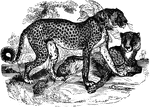
Cheetah
"In size and shape it is between the leopard and the hound. The color is yellowish fawn above, ad nearly…
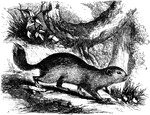
Souslik
"Is about either inches long, and the tail one-third as long; its color is grayish-brown, marked with…
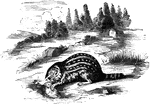
Leopard Spermophile
"The leopard spermophile is one of the most beautiful of all striped species of spermophile. It resembles…
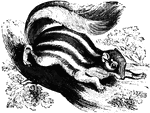
American Chipmunk
Tamia Striata. "It is about five inches long, and of a fawn-color above, striped wth five brown and…
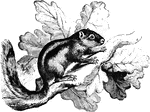
Barbary Squirrel
"Is about the size of the European squirrel, being nearly ten inches in length. It is grayish-brown,…
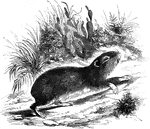
Rock Cavy
"In this animal, the fur is soft, its general hue gray, tinted with rufous on the hinder art of the…
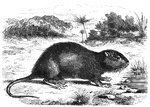
Coypu
"This has ears of moderate size; fur long; upper parts of the snimal penciled with dusky and brownish-yellow…
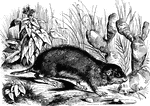
Brazilian Ctenomys
"Is reddish above and white beneath; body six inches long, and tail two inches. It lives near water,…
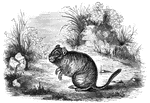
Octodon
"In size and shape, it resembles the water rat. The fur is long and moderately soft; upper parts of…

Battle of New Berne
"Battle of New Berne- Lieutenant Hammond capturing Colonel Avery, of South Carolina, while he was endeavoring…

Siege of Vicksburg
"Siege of Vicksburg. Life in the trenches- bivouac of Leggett's Brigade- McPherson's Corps at the White…

Bogue Island
"The Federal siege works on Bogue Island, N. C., erected for the reduction of Fort Macon. Our sketch…

Che-Kiang
"The Banks Expedition- a Confederate Schooner running into the United States transport Che-Kiang,…
Fort Moultrie
"Siege of Charleston, S. C. Bombardment of Fort Moultrie and Batteries Bee and Beauregard by the monitors…

Dutch Gap Canal
"Blowing out of the bulkhead of the Dutch Gap Canal, James River, Va., January 1st, 1865. At twelve…
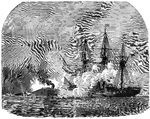
Mobile Harbor
"Farragut's naval victory in Mobile Harbor. The Hartford engaging the Confederate ram Tennessee.…
!["Siege of Petersburg- the Ninth Corps charging on the enemy's works after the explosion of the mine, July 30th, 1864. Immediately after the explosion of the mine a hundred cannons opened along the Federal front, and at half-past five the Ninth Corps charged, carrying the fort with a part of the line on each side. The Second Division, which was in the centre, advanced and carried the second line a short distance beyond the fort, and rested, holding ground with the utmost determination. It was at the time the [African American] Division, under General White, was pushed forward and ordered to charge and carry the crest of the hill, which would have decided the contest. The troops advanced in good order as far as the first line, where they received a galling fire, which checked them, and although quite a number kept on advancing, the greater number seemed to become utterly demoralized, part taking refuge in the fort, and the remainder running to the rear as fast as possible. They were rallied and again pushed forward, but without success, the greater part of the officers being killed or wounded."— Frank Leslie, 1896](https://etc.usf.edu/clipart/11800/11856/petersburg_11856_mth.gif)
Siege of Petersburg
"Siege of Petersburg- the Ninth Corps charging on the enemy's works after the explosion of the mine,…

Battle of Poplar Spring Church
"Grant's movements south of the James- Battle of Poplar Spring Church- the Ninth Corps passing Poplar…

Cross-section of a leaf
Cross section of a leaf, showing the breathing pores and intercellular spaces. The small dots are grains…

Fruitful cotton plant
An early, rapid fruiting, productive type of cotton plant, with low fruit limbs, short joints and continuous…
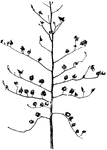
Unfruitful Cotton Plant
A late, slow fruiting, unproductive type of cotton plant, with high fruit limbs and long joints. Leaves…
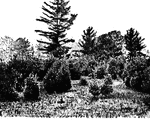
Pasture with Trees
White pines coming into a pasture. On this land trees pay better than the poor pasture.

Fork-Tailed Kite
"The fork-tailed kite, (N. furcatus) is twenty-five inches long; the wings and tail black;…
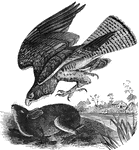
Common Buzzard of Europe
"B. vulgaris is twenty-two inches long, the head is large and the body heavy. Above, the color…
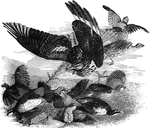
American Marsh Hawk
Also known as the American harrier, the marsh hawk (C. Hudsonius) is nineteen to twenty-one…
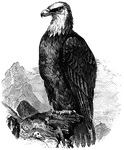
Bald Eagle
Bald (or white-headed) eagle, H. leucocephalus, common along sea-coasts, lakes, and rivers.
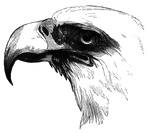
Head of a Bald Eagle
The head of a bald eagle. The distictive white plumage of this area earned it its nickname.
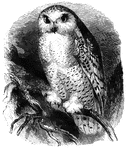
White Owl
The white owl (also known as the snowy or ermine owl), found in the colder latitudes of the world. Its…

Common European Nuthatch
A small, omnivorous bird, which gets its name from the hatches or hammerings it leaves on nuts.
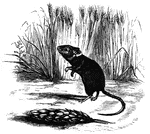
Long Tailed Field Mouse
"It being four to five inches long, the tail nearly the length of the body. Its color is a yellowish-fawn…
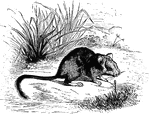
White Footed Tree Rat
Hapalotis Albipes. "Nearly the size of a rabbit, but of mouse-like form, and is chiefly found in New…
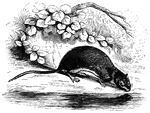
White Bellied Hydromys
Has a chestnut color above and a white belly. They are found along the Swan River.
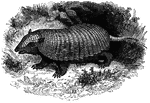
Giant Tatou
"In this carapace covers the body above and low down on the sides, but leaves the belly unprotected;…
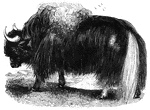
Yak
"The color of this animal in the wild and take, is black; the back and tail often white; the hair is…

Short Horn Cattle
"The head is small and finely formed, the eye bright and clear, the horn light in substance and waxy…
